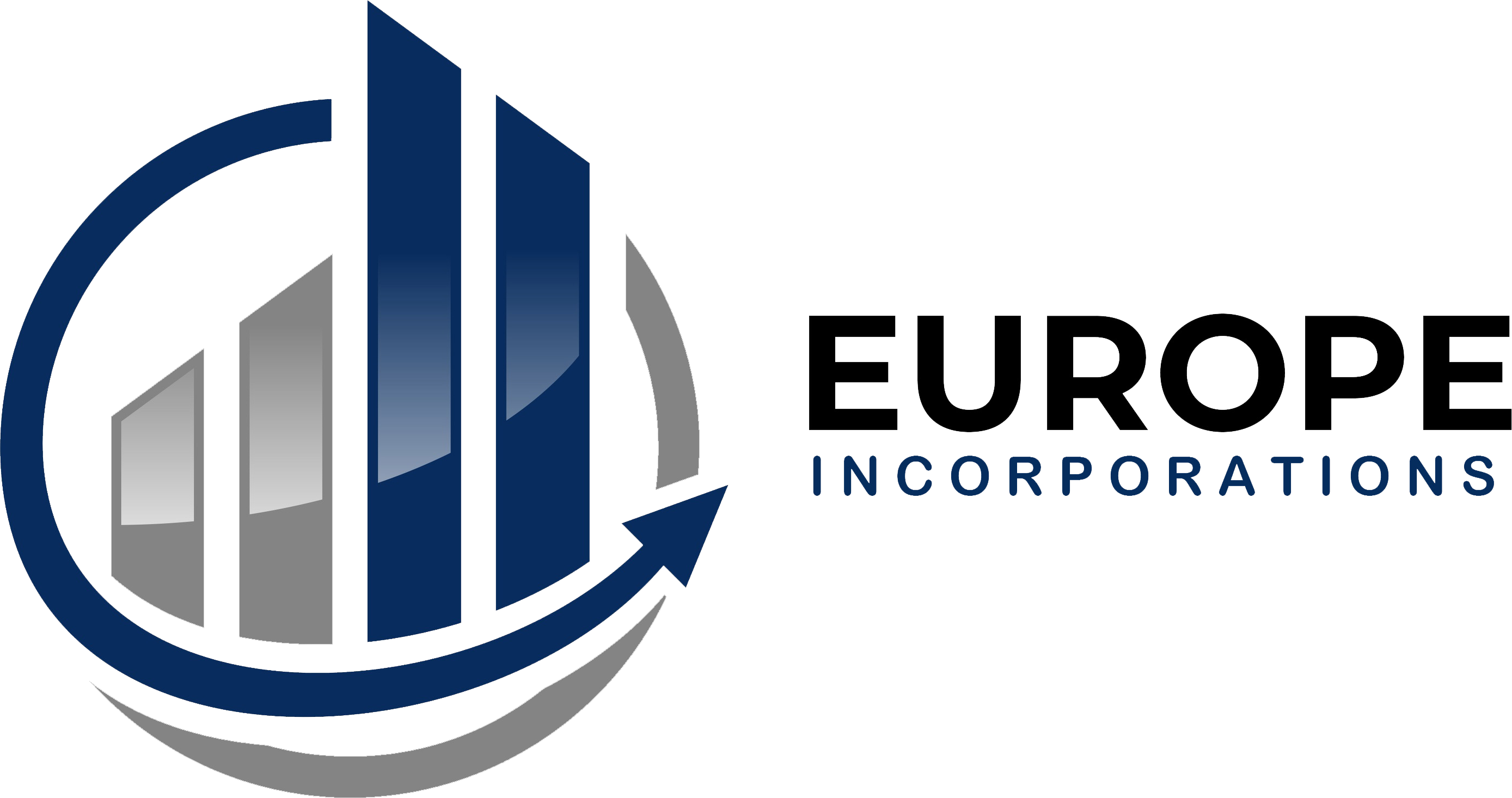Introduction
The SARL (Société à Responsabilité Limitée) is France’s foundational limited liability company (LLC). It has been around forever. However, the SAS (Société Par Actions Simplifiée), lesser-known outside France, is also a robust limited liability company (LLC), often more suitable for flexible operations than the SARL.
If you are a sole person, your choice is between the unipersonal SARL – the sole proprietorship EURL (Entreprise Unipersonnelle à Responsabilité Limitée) and the unipersonal SAS – the single-member SASU (Société Par Actions Simplifiée).
How to choose? Europe Incorporation will guide you through the different characteristics of the SARL and SAS to aid you in selecting which legal entity structure might best suit your overall requirements in creating your company and establishing your business in France.
SARL
The SARL (Limited Liability Company) is a commercial company whose partners’ liability is limited to their contributions. Formation requires at least two partners with a maximum limit of 100.
The SARL’s partners can be natural or legal (a company) persons. Partners pay their contributions to the capital in exchange for company shares.
A manager manages the SARL. She or he must be a natural person and can also be one of the partners. The manager is a majority manager (shareholder) if she or he owns at least 50% of the shares + 1. Otherwise, the manager is a minority shareholder.
The SARL is a modest company, with most operating and organizational rules determined by France’s commercial code. Various business activities are allowed, and the rules for creating a SARL are standard. Articles of incorporation drafted to define the corporate purpose are very important.
Several factors limit the SARL’s prospects of evolution – limit on the number of partners (100), difficulties in issuing bonds, prohibition of offering securities to the public, including the issuance of warrants for business creators – BSCPEs (Les bons de souscription de parts de créateur d’entreprise), and its lack of flexibility have relegated the SARL behind the SAS in new company creations in France in recent years.
Additionally, without established partners’ agreements, the SARL is less attractive to investors than the SAS. However, the formalized legal framework of the SARL’s tailor-made structure can provide comfort for entrepreneurs not chasing fast growth. The SARL is the ideal LLC to start your business in such cases.

SAS
The SAS is a limited liability joint stock commercial company. Like the SARL, it also complies with the provisions of the Civil and Commercial Codes. Like the SARL, the SAS formation requires at least two shareholders/founders who can be natural or legal persons. There is no limit to the number of shareholders in a SAS.
The SAS has the right to participate in financing (crowdfunding) but cannot offer its shares to the public or on a publicly-traded stock market. It is headed by a president, who can be a legal or physical person.
The SAS is France’s legal entity structure most adapted to startups. It benefits from statutory freedom – meaning that the law allows great flexibility to owners/partners to define their company’s functioning and organization. You can freely organize your company’s operations in the articles of incorporation and freely define the roles of third parties, such as external inventors or investors, to include them in the company’s decision-making.
This versatility, added to the possibility of issuing bonds, securities of different classes to restricted circles of investors, and warrants for business creators – BSCPEs (Les bons de souscription de parts de créateur d’entreprise), make the SAS very attractive for investors and a springboard LLC for start-ups and growth companies.
If you want to attract investors, the SAS is a superior choice to the SARL.



SARL versus SAS – Similarities
Whether SARL or SAS, both companies are limited liability commercial companies (LLCs) in which the partners/shareholders are liable for the company’s debts only up to the amount of their contribution. Partners/shareholders’ capital is divided into shares, and they are liable for the company’s debts up to the amount of the contributions they made to its share capital.
If the company defaults on its debts, its creditors get reimbursed from its assets and share capital but not from the partners’ personal assets (unless they had provided such guarantees). With SARL or SAS, you cannot lose more than you put in.
There is no difference between the two forms of legal entities in terms of :
- Obligation to draw up articles of incorporation
- Quality of the partners
- Duration of the company’s life
- Activities to be carried out
- Capital contributions.
Formalities
The formalities of creation are also almost identical. A notable difference relates to the distribution of the share capital:
- In SAS, the capital is divided into shares, and it is possible to create several classes of shares, whereas, in the SARL, the capital division is only into shares of the same class.
Another difference lies in the articles of incorporation. For the SARL, the articles are formalized by law, with little ability to change the form or substance of the clauses. For the SAS, though, the articles of incorporation are flexible. The founders can personalize clauses to suit their needs.
Taxation
Excluding VAT and other local taxes, there are two primary business tax regimes in France – corporate taxes, designated “IS” (Impôt sur les Sociétés), and personal income taxes, designated “IR” (Impôt sur le Revenu).
Corporate Taxes (IS)
Both the SARL and the SAS are subject to standard corporate income tax – now at a rate of 25% on the total taxable income for all companies.
A reduced corporate income tax rate of 15% is available under two conditions:
- Turnover excluding tax of less than 10 million euros (achieved over 12 months);
- Capital is fully paid and at least 75% owned by individuals (or by the company applying this criterion).
This reduced rate applies to up to 38,120 euros of profit for SMEs. If profits exceed this amount, the excess profit is taxed at the standard 25% rate.
Income Taxes (IR)
The SAS and SARL can both opt for income (as opposed to corporate) tax if they are under five years old and for a maximum of five years. Both legal structures can opt for this personal income tax regime if the company is not listed but carries out industrial, commercial, artisanal, agricultural, or liberal activities.
Other conditions include employing less than fifty employees and having an annual turnover or balance sheet total of less than 10 million euros during the financial year. Individuals must hold at least 50% of the capital and voting rights and at least 34% by one or more managers and members of their tax household.
A special regime of the “family SARL” allows the company to be indefinitely taxed at the IR rate. But as this tax regime change entails increasing the partners’ commitments, its option needs their consent and must be exercised unanimously by the partners.
Health Expenses
The two social regimes are identical. Therefore, SARL managers and SAS presidents resort to complementary health insurance, regardless of the social regime affiliation.
Areas of Business Activity
The SARL and the SAS are suitable for different fields of activities, including commercial (purchase and sale of goods for profit, sale of services, or rental of goods or services) or artisanal activities (trades registered in the official list of crafts or arts and crafts, where the company has less than 11 employees at the time of creation and specific know-how is established by a diploma or other qualifications).
Both business forms are also suitable for liberal activities (mainly intellectual services, with the same requirement to justify competence by diploma or training).
The SARL and SAS are also suitable for agricultural activities, defined in the official government texts as “an activity is agricultural if it depends on the plant or animal biological cycle within the framework of a farm or a production.”
A SARL or a SAS may also perform multiple commercial activities. France assigns activity APE codes to business activities, so a company with various activities will have a different code for each activity performed.
Restrictions
A SARL or a SAS cannot be used for some business activities. For example, tobacco retailers cannot incorporate as a SARL or SAS. The tobacconist may set up a sole proprietorship (EI – Entrepreneur individuel), or if she or he wishes to work with several partners, they must form a general partnership (SNC – Société en nom Collectif). In addition, all members of that general partnership must be natural persons, and the absolute majority shareholder must manage the tobacco shop.
Artists, insurance, savings, or finance/capitalization activities cannot incorporate as a SARL or SAS.
Regulated Activities
In some cases, verifying that your intended business activity is not regulated should be your first consideration in choosing the correct legal entity. Europe Incorporations will advise, verify, and guide you throughout the process.
Many regulated activities, craft trades, and liberal professions also preclude using a SARL or a SAS. Others that do are subject to specific regulations relating to the following:
- Having a diploma or qualification in the craft trades or certain liberal professions
- Obtaining administrative authorization to practice (this may be required upon registration to prove that owners have the right qualifications to practice or sell particular products or services).
- Standards applied to the sector of activities such as the sale of alcohol, site security, accessibility, hygiene, etc.).
- Certain conditions for partners (age, criminal record, insurance, etc.).

Material Differences
Significant differences between SARL and SAS include the social security regimes (charges and coverage) to which owners/managers are subjected and the general options available for your company’s future. Depending on your field of activity, the level to which you will delegate operations to local managers, and your vision for the evolution of your company, choosing the SARL or SAS will make a big difference.
The SARL is managed by a “manager” who could be one of the partners. The SAS is managed by a “president,” who could be the owner or an appointed person.
Share Transfer
The SAS has the advantage when it comes to transmitting the company’s shares,. The transfer of SAS shares requires less formalities and is subject to a much lower tax burden than the transfer of SARL shares.
The transfer of shares of a SARL is subject to registration fees of 3% after applying an allowance equal to 23,000€ x the number of shares transferred / total number of shares of the company, whereas transferring shares in a SAS incurs registration fees of 0.1% of the sale price of the shares. If this transfer results in a capital gain, it is taxed at the rate for capital gains on the transfer of securities and corporate rights
Pension Plans
The manager subject to the social regime of assimilated employees (SAS president or SARL minority manager) is subject to much higher compulsory pension contributions than the non-salaried TNS manager (SARL majority manager). The salaried executive is, therefore, subject to an onerous global pension plan, which they do not control.
The compulsory scheme for TNS managers is much less expensive. This makes it possible to allocate a larger sum to funded pension plans (MADELIN plan) or to invest the available funds differently (real estate investment, interest-bearing accounts, or others)
Salary versus Dividends
The method of compensating the company’s manager(s) is another essential criterion in choosing its legal status.
If you wish to compensate managers monthly, the SARL (limited liability company) has lower social charges. However, be careful. Less social charges = less social protection for recipients.
Where compensation by dividends is preferred, the SAS is the better choice.
Social Security Regimes of Managers
The fiscal and social status of the managers is among the most significant determining factors in choosing the SARL or SAS., which also carried through to the single-person forms. One of the main differences between the sole-proprietorship EURL and the single-member SASU is also the social regime of the company’s manager.
SARL Manager
For the SARL, the majority manager is a non-salaried worker “TNS” (Travailleurs Non-Salarié) affiliated to the SSI (Sécurité Sociale des indépendants), formerly RSI (Régime Sociale des indépendants). For a long time, the majority (shareholder) managers of SARLs were excluded from certain benefits.
Today, majority and minority managers share the same tax advantages of the assimilated employee regime – meaning, they are taxed as regular employees for social coverage.
For social security, minority managers benefit from the assimilated employee regime, while majority managers are subject to the self-employed regime (TNS).
The manager is a majority manager if the sum of his shares, those of his minor children, his partner (PACS – non-marital partnerships), his spouse, the co-managers, and the companies he controls, is superior to 50% of the total shares of the SARL. Thus, a manager holding 1% of the shares, whose wife holds 25%, and whose co-manager holds 25% is considered a majority manager.
Financial & Social Impact
The monthly compensation paid to the majority manager is subject to social security contributions of 45% of the net (approximately 31% of the gross). These social contributions for year N are calculated off the remuneration paid in N-2 – meaning a two-year cash flow deferral.
Dividends paid to the majority manager are subject to social security contributions of 45%.
Even if a company does not pay its manager a salary, it still has to pay minimum contributions. The SARL or EURL is not the best option for the entrepreneur who does not plan to pay his manager immediately.
The social security coverage offered to majority managers (non-salaried worker “TNS”) is less than the coverage the general social security regime provides to assimilated employees.
SARL managers and individual entrepreneurs (EI, micro-entrepreneurs) depend on the self-employed regime for health and old age coverage. The self-employed’s contribution scales align with those of private sector employees, and the benefits are the same for retirement, daily allowances, and disability.
As a managing partner of a SARL, even if you receive no compensation, you must make your social contributions at least annually. In this context, the manager contributes to the employee portion and the company to the employer portion.
These contributions are much higher than those paid under the TNS regime. However, these social contributions are based solely on compensation.
SAS Manager
The SAS president is a salaried executive affiliated with the general social security regime. As the SAS is fiscally assimilated to the SA (France’s equivalent of the US’ “Inc.”), the chairman and the other directors exercising functions similar to those of the directors of the SA are, in terms of social status, assimilated to employees in the taxation of their compensation.
Regarding social security, the directors are affiliated with the general social security system, which places them, like the chairman and the managing director in the SA, in the same situation as employees but without unemployment protection.
For the SAS president, it is the same. Note that the equal or minority manager of a SARL (i.e., who is not a majority shareholder) is also considered an assimilated employee and affiliated with the general social security regime.
Financial & Social Impact
The social security affiliation has both financial and social consequences whereby there is a tradeoff between contribution and coverage in the different forms of limited liability companies:
- The monthly compensation paid to the president is subject to social security contributions of 82% of the net amount.
- These social contributions for year N are calculated based on the compensation paid in year N. Therefore, no cash flow deferrals.
- Dividends paid to the president are subject to social security contributions of 15.5%.
- Social contributions are proportional to the president’s compensation: if the company pays her little or no remuneration, it will pay little or no contributions!
- Generally, the social security coverage for assimilated employees is superior to that of non-salaried employees.
Organization and Evolution
In addition to the financial impact of taxes and social charges, the choice of a legal entity structure ultimately depends on the owners’ ambitions and plans for the future. Where your activities are not regulated or subject to restrictions on the choice of legal form, your company’s anticipated evolution can help you choose between SARL or SAS.
Buoyant activities with less structural operations might find the highly flexible SAS a more attractive option for growth. Start-ups, new technologies, human services companies, service interrupters, and green economy companies are all suitable SAS businesses.
The SARL is a better option for business activities that are more formalized or structured, and formation is by partners with a strong emphasis on their roles and protecting their rights as partners.
Summary
The SARL remains adapted and advantageous for the great majority of activities. The SAS also has many corporate and financial engineering advantages, which are made possible by the free drafting of its articles of incorporation and its ease in attracting new investors. But the SARL is still a suitable solution for those not searching for outside financing from private investors or envisioning the transfer of company shares.
Both are limited liability companies (LLCs) where the partners are only liable for the company’s debts up to their contribution – the SARL being a partnership and the SAS, a joint stock company.
Both are subject to corporate income tax but can opt for personal income tax.
Both are the same regarding the obligation to draw up articles of incorporation. However, the framework of the SARL’s articles is fixed by law, while that of the SAS is flexible and defined by the founders.
The partner quality, the company’s life duration, the activities carried out, and the share capital contributions are the same for both.
The formalities for creating a SAS or a SARL are almost identical. However, in a SAS, the share capital can be divided into shares of different classes, whereas in a SARL, it is divided into shares of the same class.
The SARL is better for founders intending to form a true limited liability company (LLC) with all the advantages of a partnership. The SAS is a preferred limited liability company (LLC) for founders seeking flexibility in operations and attracting investors down the road.
Whether a SAS or SARL, Europe Incorporations will guide you in selecting the most appropriate legal entity structure and will incorporate your company in France.



